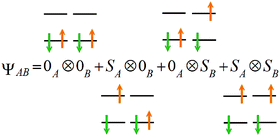Application of valence-bond techniques to the study of weakly bound complexes. The potential energy surface of the Ne–CH4 system
Abstract
We present a comprehensive survey of the Molecular Orbital-Valence Bond (MO-VB) method, a theoretical scheme developed within the framework of the Valence Bond theory to deal with weakly bound intermolecular complexes. According to the MO-VB, the wavefunction of the system is expressed as a truncated non-orthogonal Configuration Interaction expansion, which is size extensive and a priori free of basis set superposition error. We report on the recent developments of the method, which extend the range of application of the MO-VB to intermolecular complexes with a quite large number of correlated electrons, showing that VB-based methods are nowadays a valid alternative to Molecular Orbital approaches also in this field. The MO-VB has been applied to study extensively the Ne–CH4 complex, and compared with the more standard MP4 and CCSD(T) results. We determined two analytical Potential Energy Surfaces (


 Please wait while we load your content...
Please wait while we load your content...